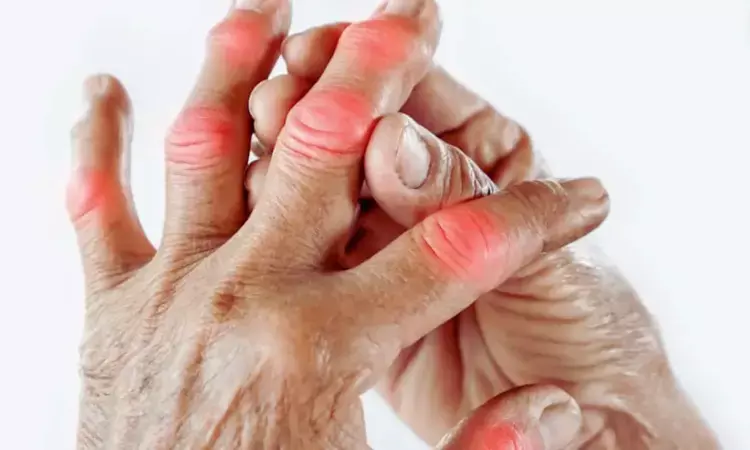- Home
- Medical news & Guidelines
- Anesthesiology
- Cardiology and CTVS
- Critical Care
- Dentistry
- Dermatology
- Diabetes and Endocrinology
- ENT
- Gastroenterology
- Medicine
- Nephrology
- Neurology
- Obstretics-Gynaecology
- Oncology
- Ophthalmology
- Orthopaedics
- Pediatrics-Neonatology
- Psychiatry
- Pulmonology
- Radiology
- Surgery
- Urology
- Laboratory Medicine
- Diet
- Nursing
- Paramedical
- Physiotherapy
- Health news
- Fact Check
- Bone Health Fact Check
- Brain Health Fact Check
- Cancer Related Fact Check
- Child Care Fact Check
- Dental and oral health fact check
- Diabetes and metabolic health fact check
- Diet and Nutrition Fact Check
- Eye and ENT Care Fact Check
- Fitness fact check
- Gut health fact check
- Heart health fact check
- Kidney health fact check
- Medical education fact check
- Men's health fact check
- Respiratory fact check
- Skin and hair care fact check
- Vaccine and Immunization fact check
- Women's health fact check
- AYUSH
- State News
- Andaman and Nicobar Islands
- Andhra Pradesh
- Arunachal Pradesh
- Assam
- Bihar
- Chandigarh
- Chattisgarh
- Dadra and Nagar Haveli
- Daman and Diu
- Delhi
- Goa
- Gujarat
- Haryana
- Himachal Pradesh
- Jammu & Kashmir
- Jharkhand
- Karnataka
- Kerala
- Ladakh
- Lakshadweep
- Madhya Pradesh
- Maharashtra
- Manipur
- Meghalaya
- Mizoram
- Nagaland
- Odisha
- Puducherry
- Punjab
- Rajasthan
- Sikkim
- Tamil Nadu
- Telangana
- Tripura
- Uttar Pradesh
- Uttrakhand
- West Bengal
- Medical Education
- Industry
Relieving urinary tract obstructions ups gouty arthritis risk in patients with hyperuricemia

China: A recent study published in Medicine journal has revealed an increased risk of gouty arthritis in patients with hyperuricemia and acute postrenal obstruction after relieving urinary tract obstruction (RUO) than before RUO.
Acute obstructive urinary tract disease is commonly caused by upper and lower urinary tract obstructions, either complete or partial. Complete retrorenal obstructions can result in acute kidney injury. Therefore, for treating patients with complete retrorenal obstructions, quickly relieving the urinary tract obstruction and restoring the urine volume are particularly important and require surgeons to apply timely RUO treatments.
However, during renal function recovery, new risk factors may occur, and increased urine volume can result from electrolyte and water disturbances caused by diuresis after obstruction, including uric acid disturbances. Dapeng Li, The Affiliated Hospital of Jining University, Weihai, Shandong, China, and colleagues aimed to evaluate the effect of relieving urinary tract obstructions on the risk of gouty arthritis in patients with postrenal obstructions and hyperuricemia.
For this purpose, the researchers retrospectively analyzed the clinical data of 130 patients with urinary tract obstructions at Rongcheng People’s Hospital from 2018 to 2021. According to the treatment method, the patients were categorized into groups A (n = 62) and B (n = 68). The ages of groups A and B were 58.40 ± 17.69 and 59.63 ± 16.12 years, respectively.
Group A patients underwent conservative treatments, such as extracorporeal shock wave lithotripsy (ESWL), drugs, and hemodialysis. Group B patients underwent cystostomy, catheterization, nephrostomy, or double J ureteral catheterization for rapid RUO.
Based on the study, the following inferences were made:
- Before treatment, the serum uric acid values were 572.05 ± 106.93 and 567.79 ± 97.21 µmol/L, respectively serum creatinine values were 226.66 ± 269.67 and 280.15 ± 200.75 µmol/L; and urine volumes were 913.23 ± 481.92 and 886.18 ± 552.72 mL/24 h, respectively.
- There were no significant differences in the general data between the two groups.
- The effects of the two treatments on gout incidence in patients with hyperuricemia complicated by postrenal obstruction were compared based on changes in uric acid level, creatinine level, and urine volume within one week after treatment.
- Multivariate logistic regression analysis was used to analyze clinical factors that increased the incidence of gout after RUO.
- The gout incidence rates in group A before and after treatment were 8.1% and 6.5%, respectively.
- The gout incidence rates in group B before and after treatment were 4.4% and 19.1%, respectively.
- Group B had a statistically significant increase in the gout incidence rate after RUO.
- Multivariate logistic regression analysis showed that age > 60 years, urine volume ≤400 mL/24 h, and creatinine level > 186 µmol/L before treatment were risk factors for gout in hyperuricemia patients after RUO.
"Gouty arthritis incidence in patients with hyperuricemia after RUO was significantly higher than that before RUO," the researchers wrote adding that renal function, age and urine volume before treatment are risk factors for gout after treatment.
"When treating such patients, attention should be paid to the changes in urine volume and uric acid levels and to the occurrence of gouty arthritis while the patient’s renal function rapidly improves," they concluded.
Reference:
Li, Dapeng MDa,*; Yue, Xiaoyan MDb; Wang, An MDa; Wang, Jun MDa; Zhang, Wei MDa; Wu, Mingming MDa; Wei, Yangguang MDa. Relieving urinary tract obstructions may increase the risk of gouty arthritis in patients with hyperuricemia and postrenal obstructions. Medicine 103(2):p e36911, January 12, 2024. | DOI: 10.1097/MD.0000000000036911
Dr Kamal Kant Kohli-MBBS, DTCD- a chest specialist with more than 30 years of practice and a flair for writing clinical articles, Dr Kamal Kant Kohli joined Medical Dialogues as a Chief Editor of Medical News. Besides writing articles, as an editor, he proofreads and verifies all the medical content published on Medical Dialogues including those coming from journals, studies,medical conferences,guidelines etc. Email: drkohli@medicaldialogues.in. Contact no. 011-43720751


